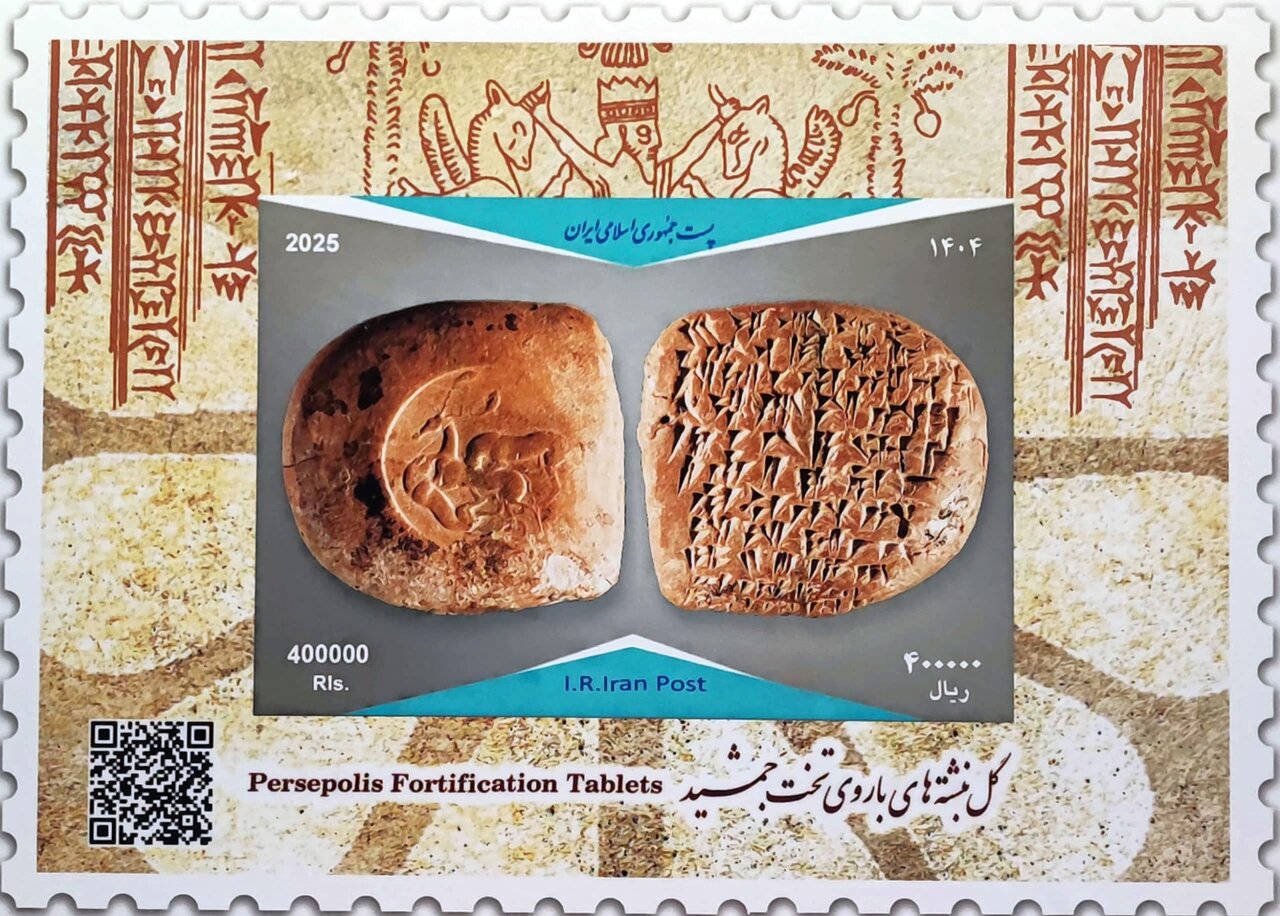Commemorative stamp honoring Persepolis Fortification Tablets unveiled

TEHRAN - On Sunday, May 18, coinciding with International Museum Day, a ceremony was held at the National Museum of Iran to unveil a commemorative stamp honoring the Persepolis Fortification Tablets.
The event was attended by the Deputy Minister of Cultural Heritage, the Head of the National Committee of Museums (ICOM), the Deputy Minister of Communications, the CEO of the Post Company, and the Director of the National Museum of Iran.
The Persepolis Fortification Tablets were discovered about 90 years ago during archaeological excavations at Persepolis and were later entrusted to the University of Chicago’s Oriental Institute for further research. These clay tablets contain records of daily events and administrative activities from the middle of Darius I’s reign, dating back to 509–493 BC. The documents were written and sealed in cities, villages, storerooms, and waystations across a region that includes modern-day Fars province and parts of Khuzestan.
Most of these tablets provide detailed reports on essential supplies such as food and drink, as well as the transportation, storage, and distribution of barley, wheat, wine, beer, fruit, poultry, and livestock. They also offer insights into the complex administrative system of the Achaemenid Empire, detailing the lives of workers, artisans, officials, travelers, the king and his court, as well as religious activities.
The tablet chosen for the commemorative stamp is of the tongue-shaped type, featuring an inscription on one side and the impression of a seal depicting two lions hunting a deer on the other. The text mentions an individual named Kambarma (Gobryas), who received three rations of drink in places called Besitme and Lidoma. This tablet dates back to the winter of 498 BCE and served as a travel document sealed with the king’s mark, carried by Kambarma.
This clay tablet is part of a collection of at least six texts documenting the journey of Kambarma and another individual named Radushdukiya over the course of a month. Radushdukiya is referred to as the wife of Mardonius (a son-in-law of the king) and possibly as the daughter-in-law (pilpia) of Gobryas. The high ration quantities and Kambarma’s familial connections suggest that he is the same figure known as Gaubaruva (in Old Persian) and Gobryas (in Greek)—one of the six Persian nobles who, according to the Behistun Inscription and Herodotus’s histories, helped Darius I secure the Achaemenid throne.
AM
Leave a Comment